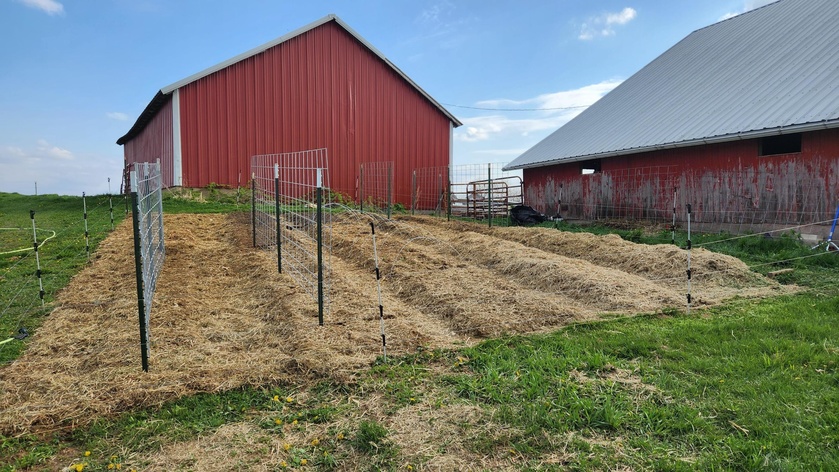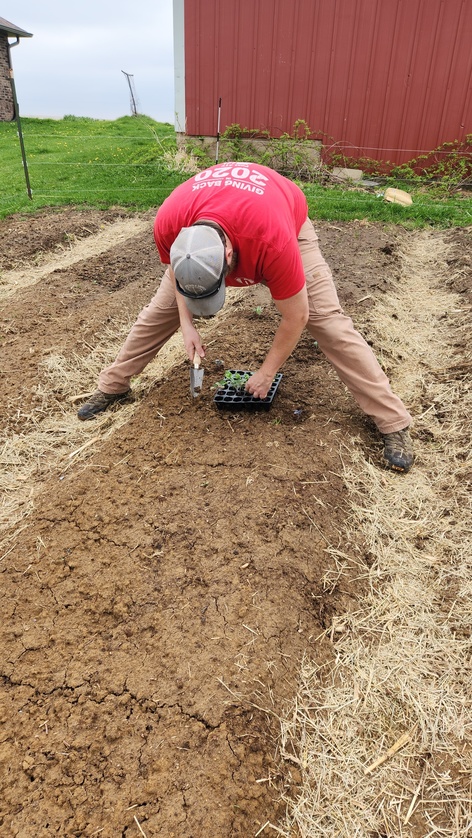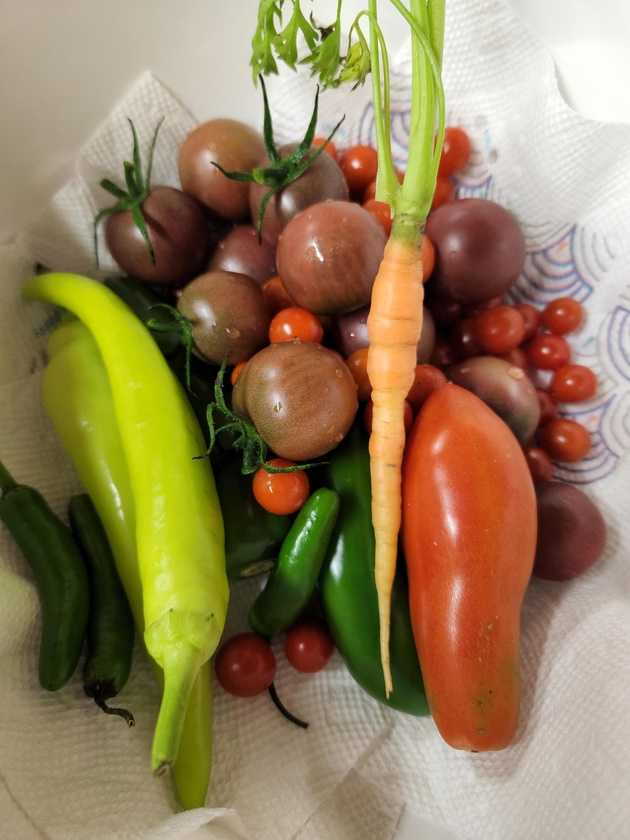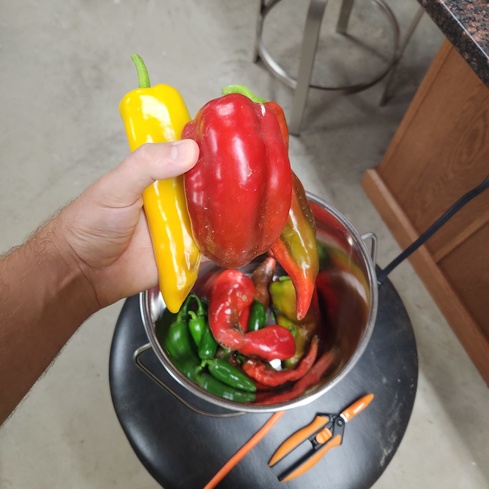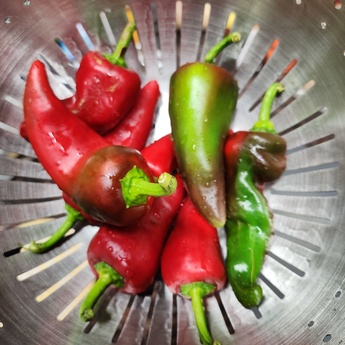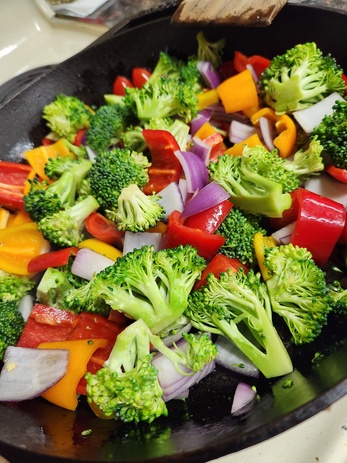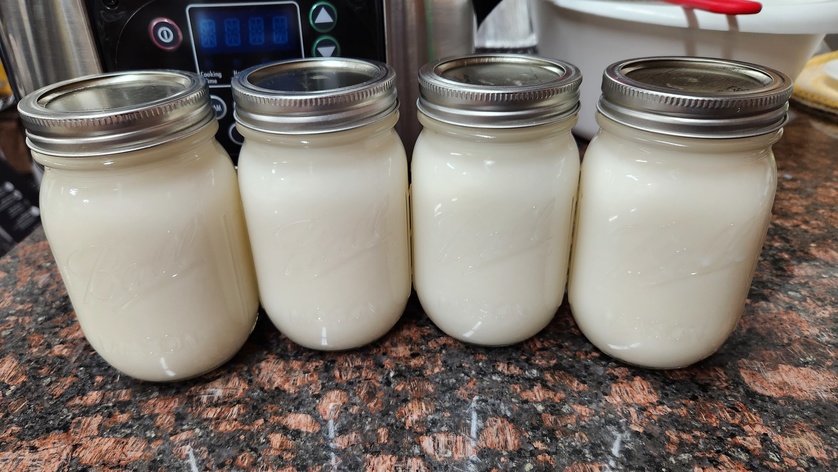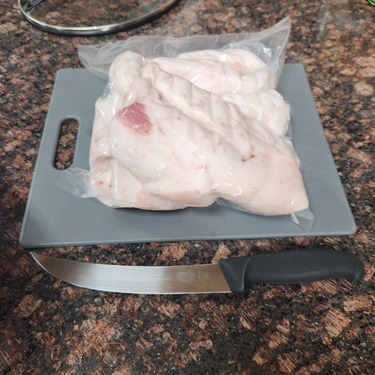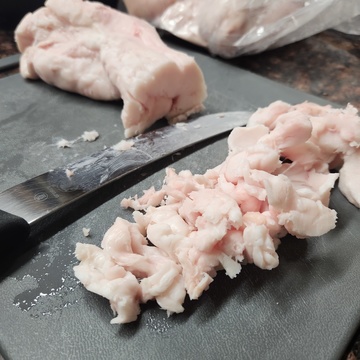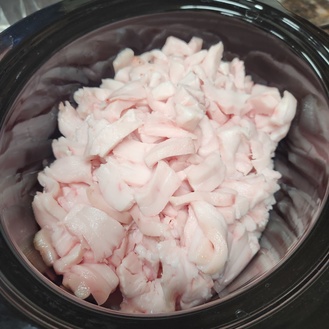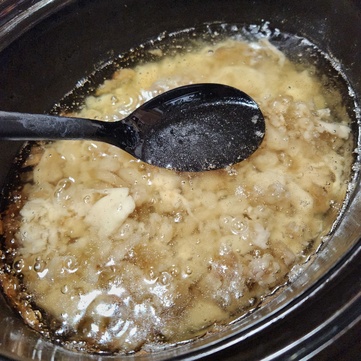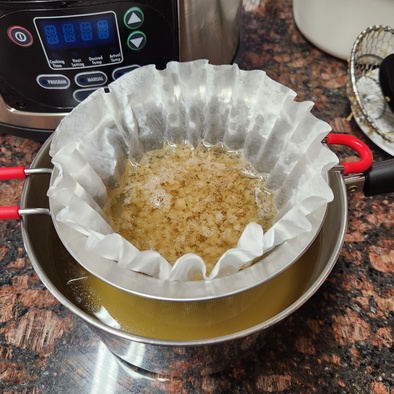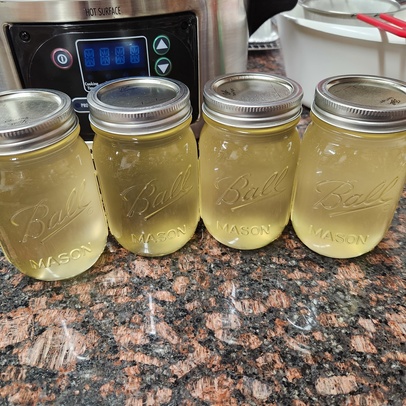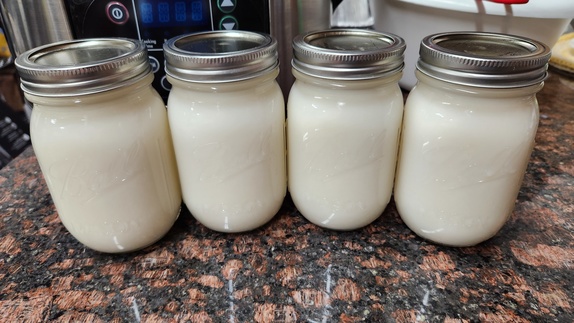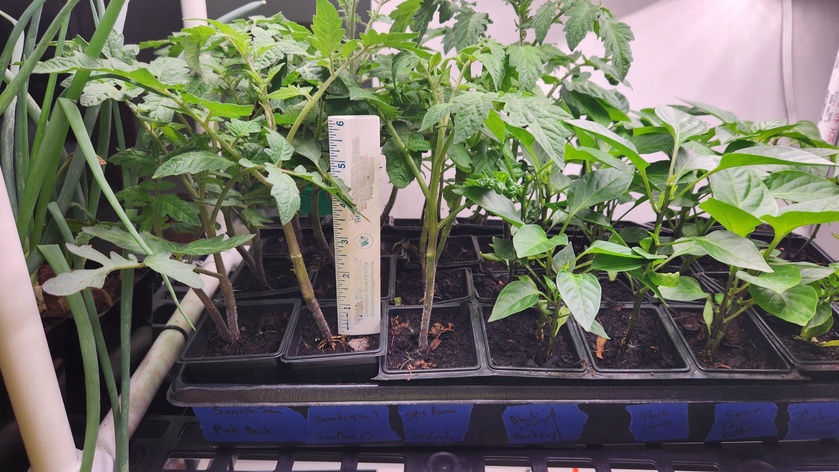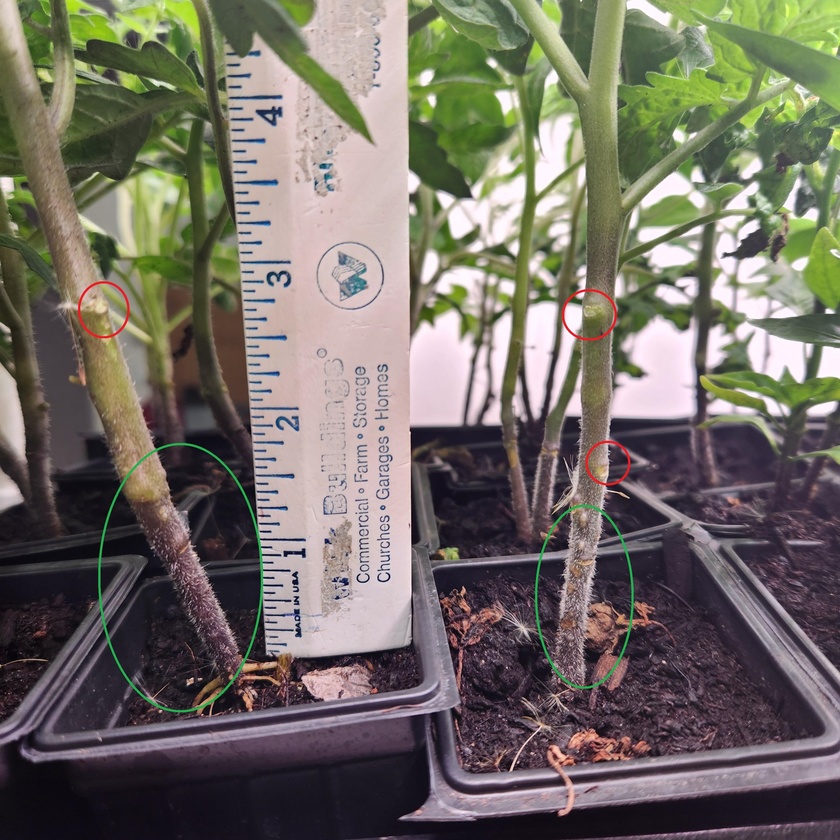Last year we faced significant challenges in the garden. We started about 6 weeks later than normal. Heavy clay soil, a dense top layer of sod, and the sudden mechanical failure of our tiller left us turning the garden over by hand. Shoveling and raking in a few large buckets of composted manure was the best we could do to prep the area for planting. The results were good considering the setbacks.
Things we're keeping the same:
Fence: We rebuilt the electric fence around the new plot (slightly larger). 3 strands of 14 ga wire, 1 around 4-6" off the ground to deter small critters, the other two spaced higher to keep out dogs and bigger animals, Gallagher S20 solar charger. Keep weeds off the wire for best results.
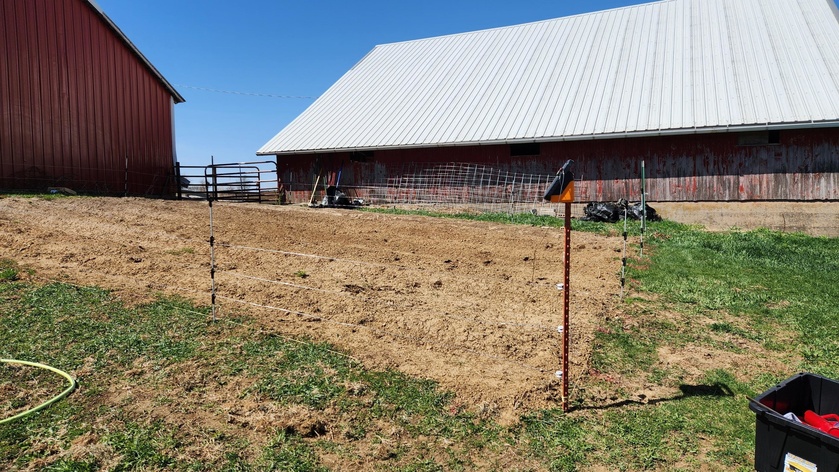
Seed Starting Station: GE LED grow lights suspended on a PVC stand, 10"x20" trays with various inserts (72 cell for peppers and tomatoes potted up to 2x2" inserts, 128 cell inserts for onions), a basic heating mat to help with germination, automatic timer for the lights. Pay close attention to your plants when they're in trays. Seed starting mix is relatively void of nutrients and can dry out rapidly. Consider watering from the top and or bottom to ensure your seedlings are getting what they need.
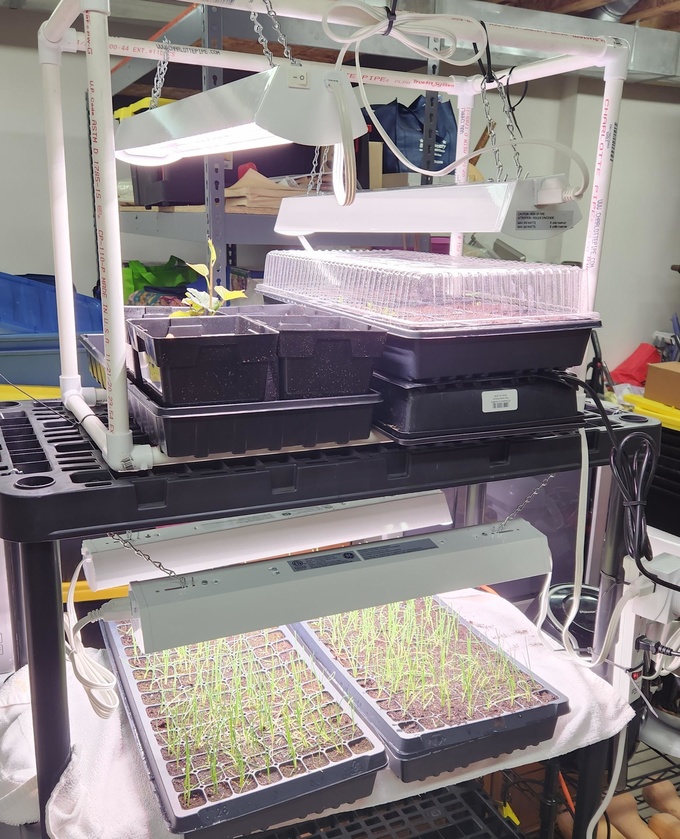
T Posts and Cattle Panels: We live in a high wind area and have opted to ditch the plastic and metal support posts for T posts and cattle panels. Last year after several storms, the cheaper posts were folded over by the wind. The T posts are stronger but make sure you over build as losing a single panel could destory a significant portion of your crops.
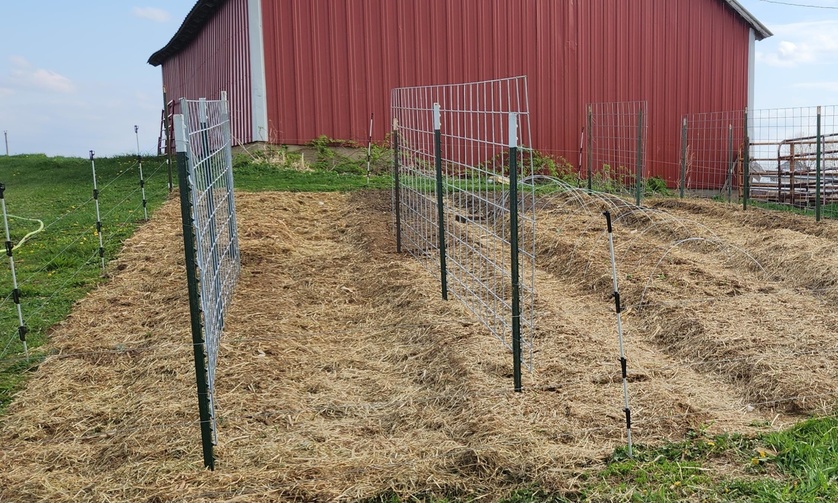
Things we're changing up:
Raised Beds: Most of the professional market gardens use a standardized 30" raised bed. To construct these I first tilled the entire garden, added my soil ammendments (details below), tilled the ammendments in (went opposite direction), then used a large garden rake to mound the soil into the raised beds. Small detail that is critical: RAKE OUT THE GRASS CLUMPS. Even if they're small take the time to remove all the undesired grass and weeds. This will make your life significantly easier later on.

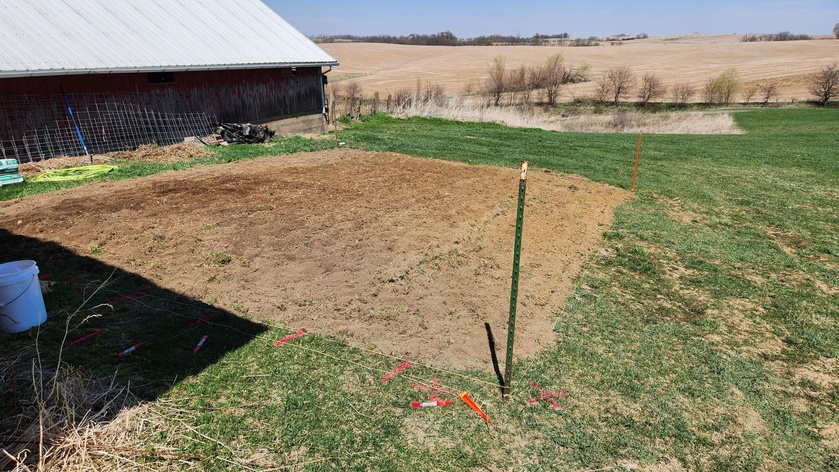
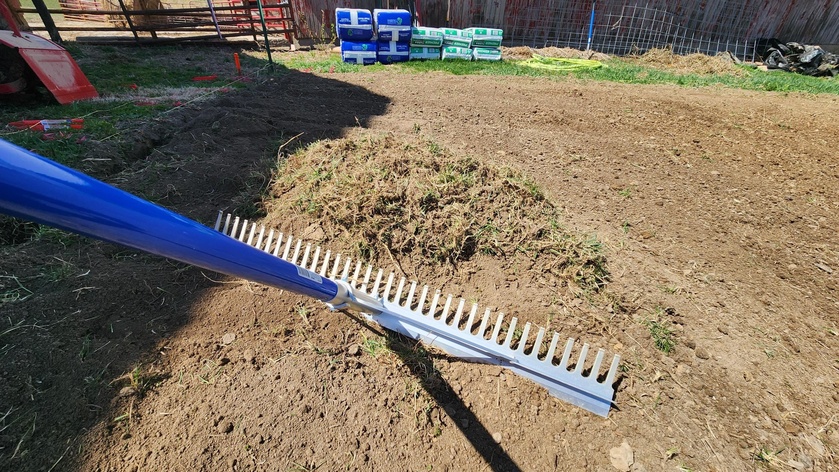
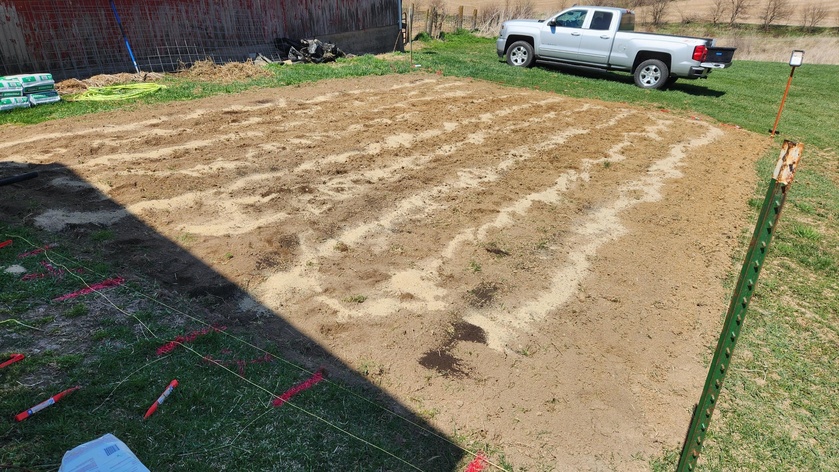
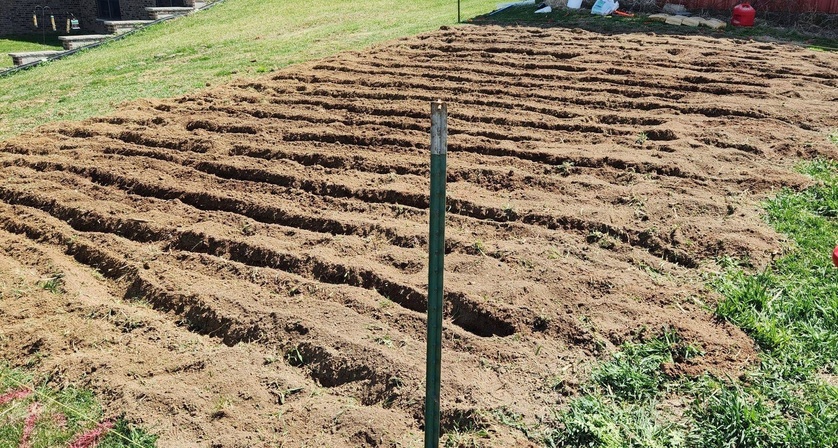
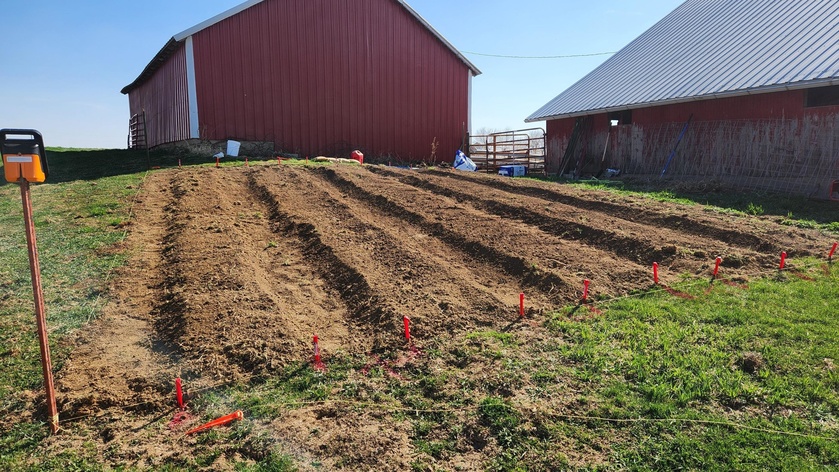
Soil ammendments: We started with almost completely clay soil. Areas we walked on last year (especially under the tarp) turned to concrete. Water did not want to absorb and tended to run downhill to the melon patch where it drowned our Cantalope (stank) melons. I added a total of 10 bricks (25 cubic feet) of peat and 10 (60 lb) bags of sand. Additionally, I like to add worm castings for the beneficial bacteria and worm eggs. I do this near my newly planted trees as well. A $30-100 tree is worth a $3-5 bag of worm crap.
Fertilizer: The big change I'm making is getting away from concentrated liquids. I don't have any particular objetions to liquids but I seem to always over fertilize when using liquid from concentrate. To prevent burning and future issues I've switched to an organic granulated fertalizer. The seedlings seem to love it and I won't scoff at positive results. If you do the same be warned that some of the organic fertilizer options can smell like death. Expert gardener 4-4-4 organic from Wally World is a prime example. I tried Dr Earth's 4-6-3 (availible at big box stores) instead and mixed a small amount in when I potted up tomatoes and peppers. No stink and no burning. All is well.
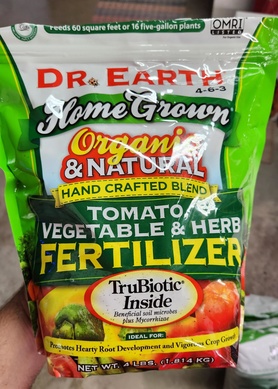
Walkways: A huge advantage of the raised beds is the natural path formed between beds. I made mine 2 ft wide for easy and quick access. Time is my most precious resource right now. The ability to do garden tasts rapidly is key. If space is more of an issue for you, make them smaller.
Ground Cover: No more tarps. I don't dont have anthing against using poly woven tarps to supress weeds. In fact, the garden area I tarped last year had almost zero weeds growing back this spring. With the clay content of my soild I opted to go with all hay mulch this year. This will help retain water and as it degrades, add organic matter to the soil. I anticipate more weed pressure but counter that by making the walkways more accessable and planting in a pattern that makes weeding much easier.
